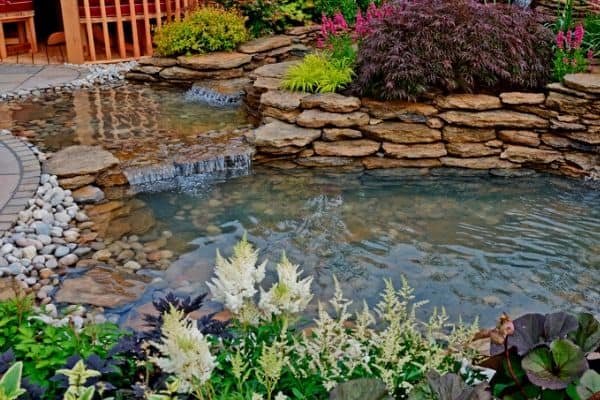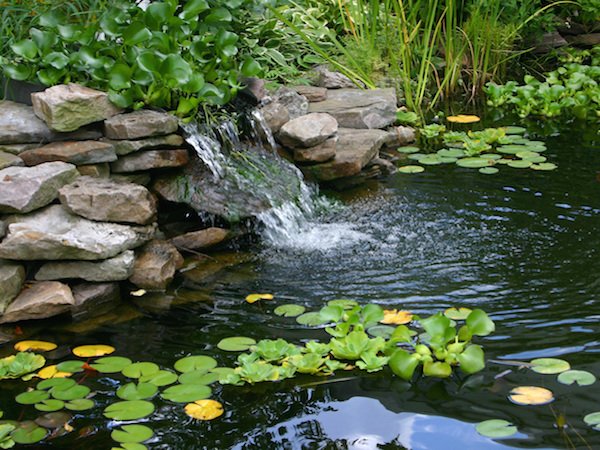A clean, healthy pond isn’t just pretty to look at—it’s essential for sustaining aquatic life and maintaining overall property value. Unfortunately, pond weeds have a way of sneaking in and taking over fast if left unchecked. If you’ve been struggling to maintain a clear pond or just want to prevent issues before they begin, this blog post has everything you need. From identifying different types of aquatic weeds to exploring fish-friendly weed control methods, we’ll walk you through practical and eco-friendly pond solutions. Let’s help you reclaim your pond with tips that work.
Know Your Enemy: Pond Weed Identification
Before you can fight pond weeds, you need to know what you’re dealing with. Understanding pond weed identification helps you choose the right treatment method. There are three main categories of pond weeds: submerged pond weeds, floating pond plants, and emergent weeds that grow along the shoreline.
Submerged weeds, like coontail or hydrilla, grow beneath the surface and can quickly choke out oxygen. Floating weeds, such as duckweed or water lettuce, form mats that block sunlight. Emergent weeds like cattails thrive around pond edges and can spread rapidly. Knowing which type you have is key to effective aquatic weed control and better pond vegetation management.
Why Pond Weeds Take Over So Quickly
Most pond owners are surprised at how fast weeds can grow. It usually starts with nutrient buildup in the water, often from fertilizers or runoff. These nutrients feed the weeds, encouraging explosive growth. Without regular pond maintenance tips and seasonal pond cleaning, this cycle continues.

Another factor is poor water circulation. Stagnant water creates the perfect environment for both invasive aquatic plants and algae to thrive. Add warm weather, and you’ve got a recipe for a weed-covered pond. Staying on top of seasonal care and runoff control is one of the best pond maintenance strategies you can adopt.
Manual Weed Removal: A Simple First Step
If your pond is experiencing a light infestation, manual weed removal is a great starting point. Tools like pond rakes and weed cutters are cost-effective and easy to use. This method works best for floating and emergent weeds and gives you more control over where and how much vegetation you remove.
However, it’s important to note that manual removal may not work for deeply rooted or widespread submerged pond weeds. Still, as part of a larger water garden care routine, hand-pulling and skimming can significantly improve pond water clarity. Make this a regular part of your maintenance, especially during warm months when weed growth peaks.
Safe Herbicides and Natural Removal Methods
When weeds go beyond what you can pull out, safe herbicides for ponds become necessary. Look for fish-friendly weed control products that are EPA-approved and target specific weeds without harming aquatic life. Liquid treatments are generally better for submerged pond weeds, while granular forms work well for shoreline issues.
Prefer natural pond weed removal? You can try barley straw, pond dyes, and beneficial bacteria. These eco-friendly pond solutions reduce algae and weed growth by limiting sunlight and improving nutrient balance. It may take longer, but natural options are great for those who want to avoid chemicals while maintaining pond water clarity.
The Role of Algae: Not Just a Weed
Pond algae can be just as problematic as invasive aquatic plants. Algae vs pond weeds is a common debate, but the truth is—they often coexist and feed off the same nutrients. Algae blooms cloud the water and compete with plants for oxygen, threatening fish and other wildlife.
Regular pond algae treatment is essential. This might include UV clarifiers, aeration systems, and algaecides. Natural alternatives like floating plants also help reduce sunlight penetration. Managing algae is a key part of lake weed control and maintaining a healthy aquatic environment overall.
Best Practices for Long-Term Weed Prevention
Preventing pond weed growth isn’t just about treatment—it’s about creating the right environment. Start by reducing nutrient inputs. This includes using phosphate-free fertilizers and installing buffer zones with native plants around your pond. These plants filter runoff and reduce excess nutrients.
Next, improve water movement with aerators or fountains. Good circulation discourages algae and weed buildup. Finally, stick to a routine of seasonal pond cleaning. Skim debris, trim overgrown plants, and monitor water quality regularly. These steps are the foundation of pond vegetation management that works year-round.
Using Fish and Plants to Your Advantage

Believe it or not, nature can help manage weeds, too. Certain fish species, like grass carp, are known for their appetite for aquatic vegetation. When introduced responsibly, they can significantly reduce submerged pond weeds without harming the ecosystem.
Floating plants like water lilies and water hyacinths can also aid in aquatic weed control by shading the water and limiting algae growth. These fish-friendly weed control options are great for those looking for sustainable, low-maintenance solutions. Just make sure any fish or plants introduced are suitable for your region and pond size.
Eco-Friendly Pond Maintenance Tips
If you’re committed to going green, there are several eco-friendly pond solutions you can adopt. Choose natural filters like rock or sand beds to promote good bacteria. Install solar-powered aerators for sustainable water movement. These small upgrades can make a big difference.
Stick with biodegradable pond treatments and limit the use of machinery to avoid disturbing the pond ecosystem. Practice mindful landscaping to reduce runoff and soil erosion. Combining these practices with traditional methods ensures a clean, healthy pond that thrives naturally—no harsh chemicals needed.
Final Thoughts
Keeping your pond clear of weeds isn’t just a one-time job—it’s an ongoing process. With the right mix of identification, manual removal, natural and chemical treatments, and preventative maintenance, you can achieve long-term clarity and health for your pond. Remember, each pond is unique. What works for one may not work for another, so stay observant, adjust your strategy, and always opt for eco-friendly practices when possible. By following the pond maintenance tips outlined here, you’ll be well on your way to enjoying a beautiful, weed-free pond all year long.
FAQs
1. What’s the most effective way to remove submerged pond weeds?
Using safe herbicides designed for underwater plants, combined with proper aeration, is typically the most effective method.
2. Are natural pond weed removal methods effective?
Yes, especially when used consistently. Barley straw, beneficial bacteria, and floating plants can gradually improve water quality and reduce weed growth.
3. Can fish help control pond weeds?
Absolutely. Fish like grass carp are commonly used for biological weed control, especially for submerged plants.
4. How often should I clean my pond to prevent weed growth?
Seasonal pond cleaning is recommended—ideally 2–4 times a year, depending on the climate and size of your pond.
